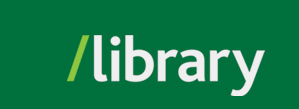This guide has been developed as a general introduction to resources for English 105, Academic Writing taught by Dr Karen Selesky. It is not a comprehensive listing of sources, but rather a starting point from which you can begin your research according to your information needs.
You may also want to consult other libguides like:
LENGTH: Your paper will be approximately 5-6 pages in a size 12 Times New Roman font.
Social justice is the relation of balance between individuals and society measured by comparing distribution of wealth differences, from personal liberties to fair privilege opportunities. In the current global grassroots movements for social justice, the emphasis has been on the breaking of barriers for social mobility, the creation of safety nets and economic justice.
Choose a work of protest art related to a particular social justice issue and write a research paper that frames this issue within our community. You might think of something like the #BLM art, the mural of George Floyd. Googling “protest art” will give you lots of examples for different issues. You might also think of photographs: Greta Thunberg and her weekly school strike for climate change or the 215 shoes on the Vancouver Gallery steps to represent the Residential School children.
Although the point of the art is not to analyze it per se, but to use it as a jumping off point to research and explore the social justice issue of your choice, an analysis might make for an effective introduction. Information is not just delivered in essay form; the art can help you think “outside the box.”
This assignment requires you first, to conduct some research for your topic and develop a working thesis and annotated bibliography, second, to analyze that research, and third to write a focused, well organized, technically competent, and informative research-based argument, for a university-based general audience of at least the level of education of your classmates in draft form.
Sources: For your research essay you will be required to use 4-6 sources to support your ideas and information; 2 of those sources should be scholarly articles.
See the document linked in the box titled "Dr Selesky's assignment details" on the left for more information.
The diagram below shows you that writing a paper is not a simple linear process.
There are various aspects that will affect what you look for and what you find. Half way through doing your paper, you might find something that really changes your perspective on the topic and how you want to write about it. So make sure you give yourself enough time for this.

Big Picture
|
Situational
|
Language
|
Information Gathering
|
Adapted from: Head, A. J., & Eisenberg, M. B. (2009). Finding context: What today's college students say about conducting research in the digital age. Retrieved from https://projectinfolit.org/publications/finding-context-study/
One of the best ways to start exploring any topic is to create a concept map. A concept map is a visual diagram that can help you:
This video from the UCLA Library describes the process of creating a concept map.
Some key points from the video:
Not all journals are created equal, and not all will be appropriate for every research need. Here are some characteristics of scholarly journals:
For more information and additional characteristics, see Types of Periodicals.
Books are rarely peer-reviewed, which can make it more challenging to determine scholarly status. However, the following are common characteristics of scholarly books:
© , University of the Fraser Valley, 33844 King Road, Abbotsford, B.C., Canada V2S 7M8

